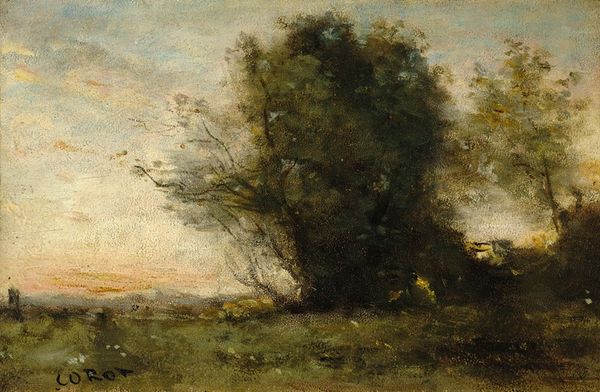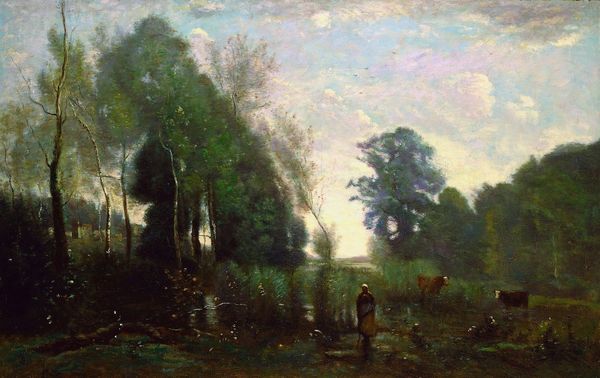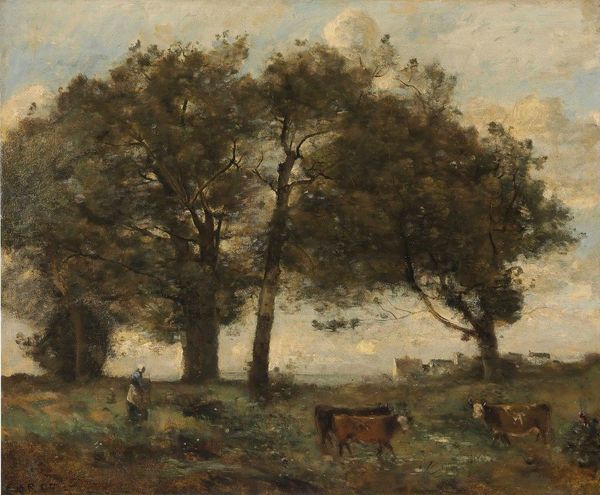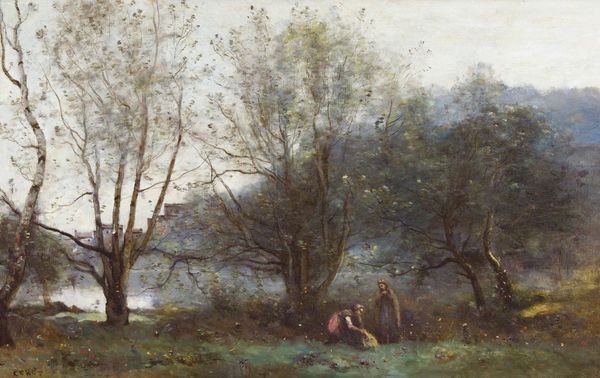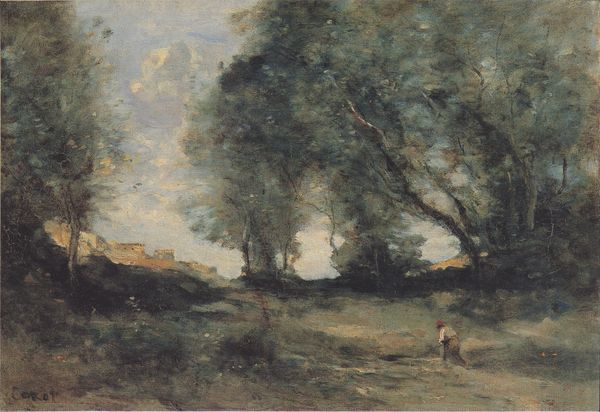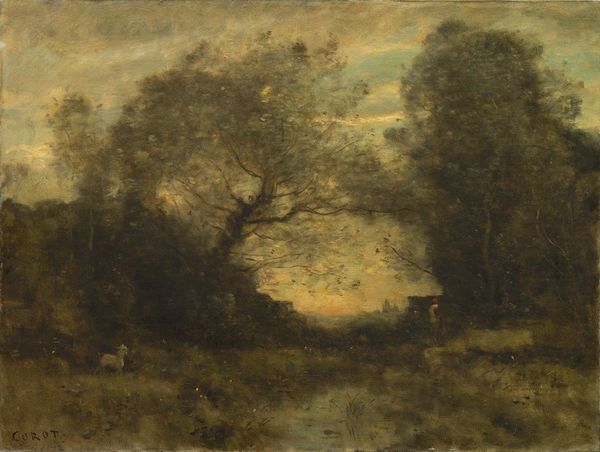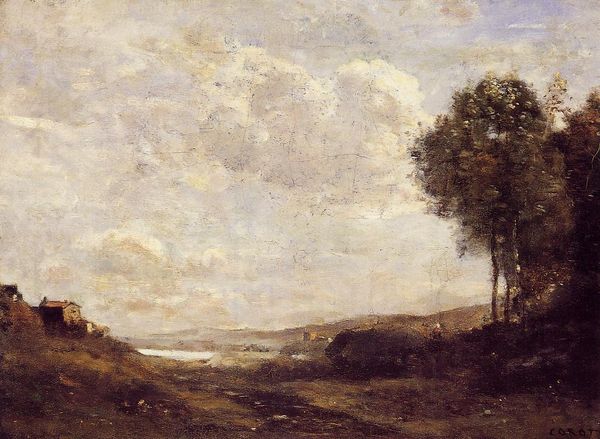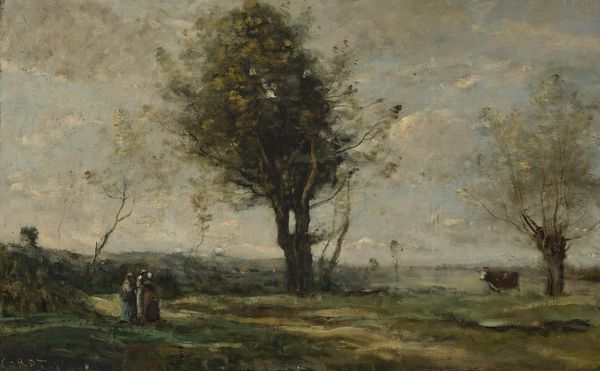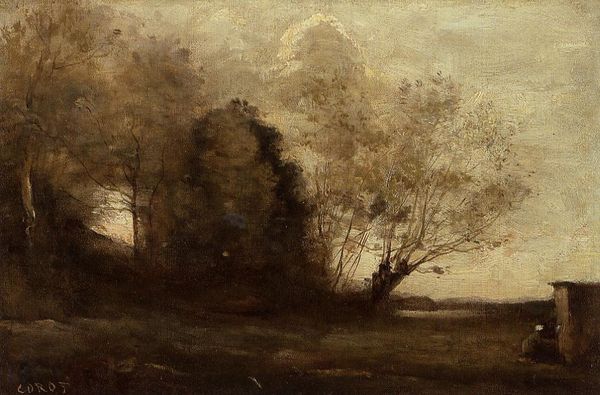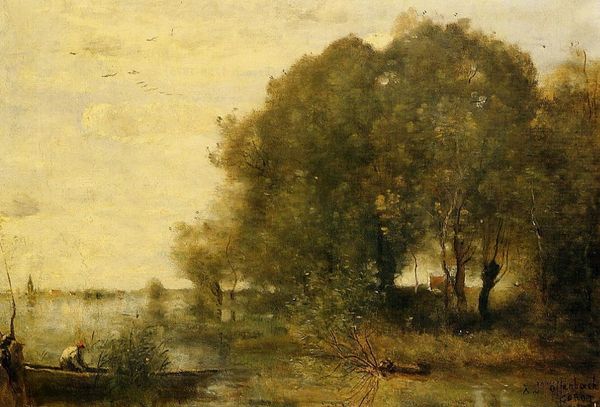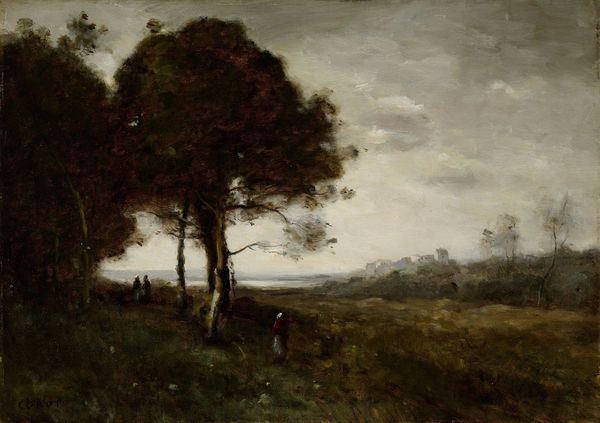
Copyright: Public Domain: Artvee
Curator: Soaked in hues of twilight, we have before us "The Fisherman - Evening Effect," a landscape painted around 1865 by Camille Corot. Editor: It feels... wistful. The hazy atmosphere and soft light give everything this otherworldly, dreamlike quality. Curator: Absolutely. Corot, working in the mid-19th century, found himself at the intersection of Romanticism and what would become Impressionism. You see that in the attention to light but also the quiet, contemplative subject matter. There’s a longing embedded here. How does the solitary figure of the fisherman resonate with you? Editor: Immediately, a sense of isolation. But not necessarily a negative one. It’s more like peaceful solitude, a connection to something larger. I'm almost compelled to think of this figure in conversation with the theories about leisure and class structures that were brewing at the time—an invitation, perhaps unconscious, to reflect upon this laborer's position. But who am I to say what Corot might’ve been thinking! Curator: Interesting, that tension between the industrializing world and a yearning for simpler times certainly plays out here. What I appreciate, too, is Corot’s skill in using light and shadow to create depth, while the muted colors add to that feeling of being caught between day and night. His landscapes became influential for later generations. Editor: It’s true; it's a study in serenity, in the art of fading light. Like a memory you're afraid to let go of. Curator: And for viewers then and now, these rural scenes offered, and continue to offer, an escape, a respite from the changing world around them. Editor: Beautifully said. Now, if you’ll excuse me, I’m going to close my eyes and try to manifest my own tranquil lakeside moment! Curator: I think I will join you in that imaginative exercise! What better way to honor the artistic legacy of Corot than to seek a similar contemplative experience?
Comments
No comments
Be the first to comment and join the conversation on the ultimate creative platform.
